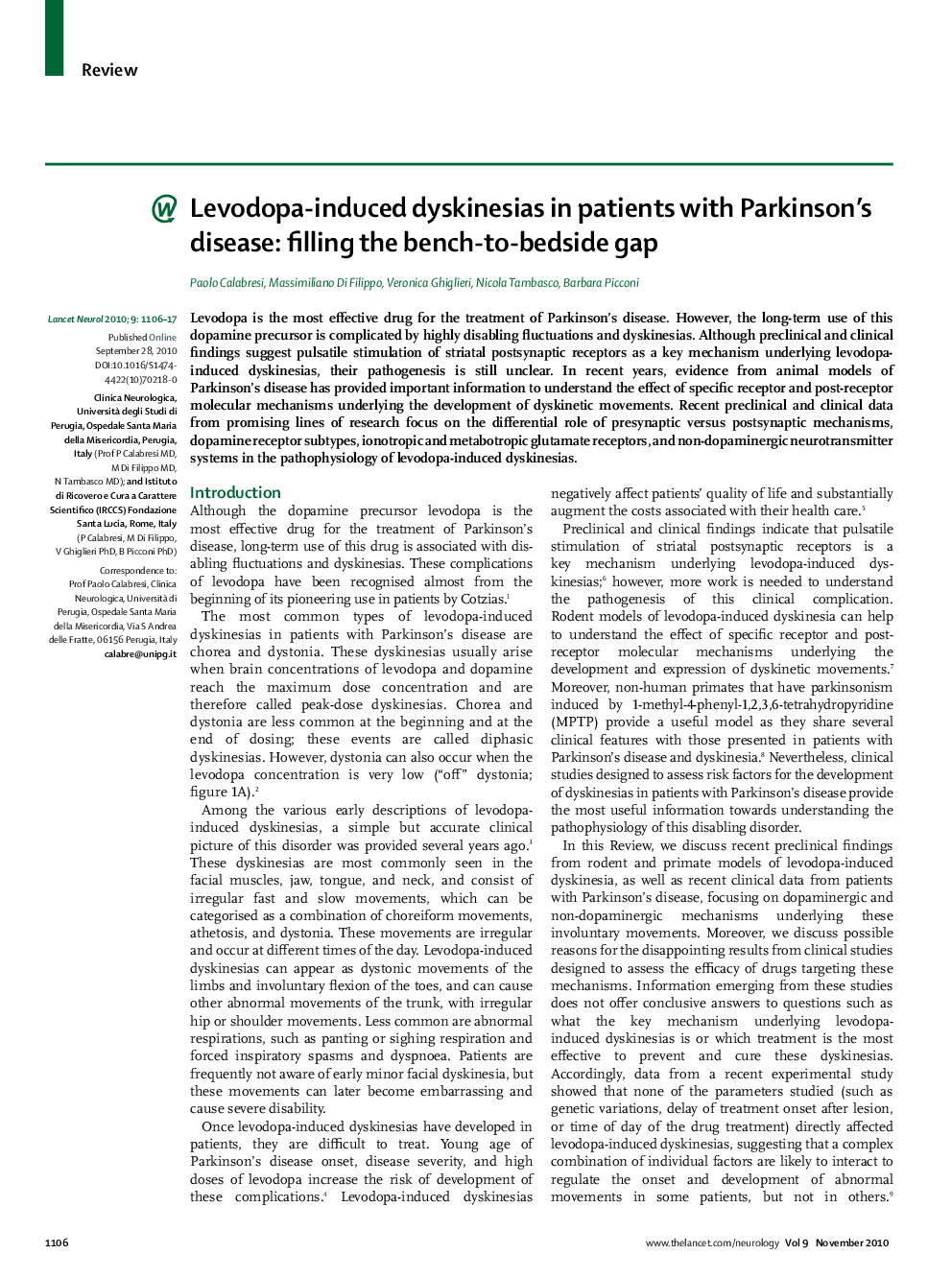| Article ID | Journal | Published Year | Pages | File Type |
|---|---|---|---|---|
| 3067248 | The Lancet Neurology | 2010 | 12 Pages |
SummaryLevodopa is the most effective drug for the treatment of Parkinson's disease. However, the long-term use of this dopamine precursor is complicated by highly disabling fluctuations and dyskinesias. Although preclinical and clinical findings suggest pulsatile stimulation of striatal postsynaptic receptors as a key mechanism underlying levodopa-induced dyskinesias, their pathogenesis is still unclear. In recent years, evidence from animal models of Parkinson's disease has provided important information to understand the effect of specific receptor and post-receptor molecular mechanisms underlying the development of dyskinetic movements. Recent preclinical and clinical data from promising lines of research focus on the differential role of presynaptic versus postsynaptic mechanisms, dopamine receptor subtypes, ionotropic and metabotropic glutamate receptors, and non-dopaminergic neurotransmitter systems in the pathophysiology of levodopa-induced dyskinesias.
